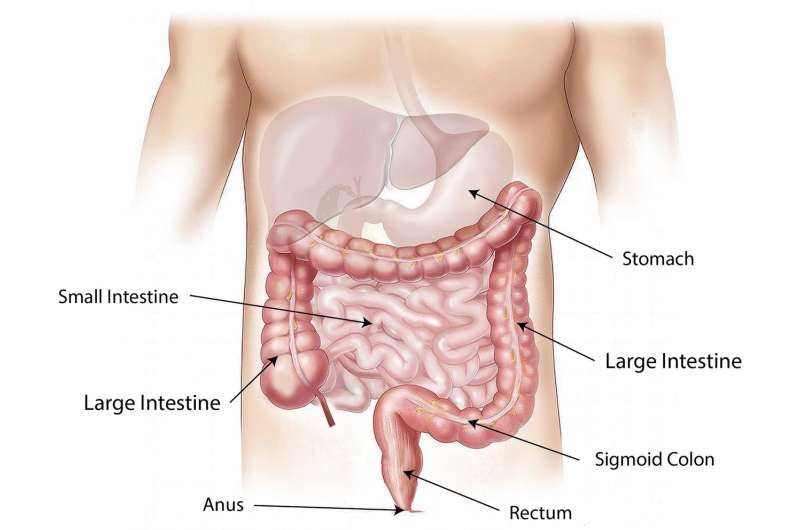Unexpected findings prompt re-evaluation of how the intestine repairs itself

Researchers at Baylor College of Medicine, Johns Hopkins University School of Medicine and the University of California, San Francisco have gained new insights into how the small intestine, one of the fastest renewing tissues in the human body, repairs itself after injury caused by intestinal rotavirus infection. Their findings have led them to propose that, contrary to the current thinking, how the intestine repairs itself seems to depend on the type of damage, and they found that triggers that were previously thought to be unimportant are actually essential for repairing virus-caused injury. The study appears in Cell Reports.
"When we began this project, most studies in the field focused either on the normal turnover of the small intestine or on the repair of damage caused by radiation, for example," said first author Winnie Zou, a student in the Medical Scientist Training Program (M.D./Ph.D.) in Dr. Mary Estes' lab at Baylor. "We studied a different damage model, damage caused by rotavirus, a common small intestinal viral infection that affects young children."
Repair and turnover of the epithelium, the most external cellular layer of the small intestine responsible for absorption of nutrients and other functions, depend on the intestinal stem cells, regardless of the cause of the damage. There are two types of intestinal stem cells: CBCs (crypt-based columnar cells) and reserve intestinal stem cells. The type of injuries studied until now damages the highly proliferative CBCs, and when these stem cells are destroyed, the reserve intestinal stem cells respond to restore the damage. The response to injury caused by rotavirus, however, is different.
"Rotavirus is an infection and has a very specific damage pattern," Zou said. "The virus specifically infects epithelial cells, but not the stem cells. Because the stem cells are intact, we wanted to investigate the type of repair response that would restore the epithelium destroyed by the virus."
"Nobody had looked at this situation before," said senior author Dr. Mary Estes, Cullen Foundation Endowed Professor Chair of Human and Molecular Virology in molecular virology and microbiology at Baylor and emeritus founding director of the Texas Medical Center Digestive Diseases Center. "This is the first study of mammalian intestinal epithelial cell injury in which the stem cells are not damaged."
Two unexpected findings
"Our first finding refers to the type of stem cell involved in the repair of the epithelial cells damaged by the virus," said Zou. "Previous studies had shown that when CBC stem cells are damaged, the reserve stem cells come to their rescue leading the reconstitution of the damaged epithelium. When rotavirus damages the epithelium, but not the stem cells, we found that the CBCs, not the reserve stem cells, are the primary cell type involved in the restoration of the intestinal epithelium."
"Until now, CBCs were not considered important for the repair of intestinal epithelium, but our results show that they are crucial for injury repair after rotavirus-induced epithelial cell damage in contrast to previous studies supporting the reserve intestinal stem cells as the cell type involved in epithelial restitution," said Estes, who is also a member of the Dan L Duncan Comprehensive Cancer Center and holds a joint appointment in gastroenterology and hepatology at Baylor.
The second unexpected finding refers to the source of the signaling molecules – called WNTs – that trigger the growth and activation of stem cells leading to injury repair. Scientists have described two sources of WNT molecules, epithelial cells and mesenchymal cells. Until now, research has considered the mesenchymal and the epithelial WNT to be redundant and not essential on their own.
"We found that the epithelial WNT molecules were essential to signal the stem cells to repair the damage caused by rotavirus infection," said Zou.
"This was the biggest surprise. The predominant idea in the field is that the epithelial WNTs have no specific function, and here we found the first model indicating that in some cases epithelial WNTs do have a specific function. We show that epithelial and mesenchymal WNTs are not interchangeable, as it was thought before," Estes said. "I think this finding will be exciting for intestinal stem cell researchers. Now, we are exploring what the infection is doing that triggers WNT production in the epithelium."
More information: Epithelial WNT Ligands Are Essential Drivers of Intestinal Stem Cell Activation. Cell Reports. DOI: dx.doi.org/10.1016/j.celrep.2017.12.093



















